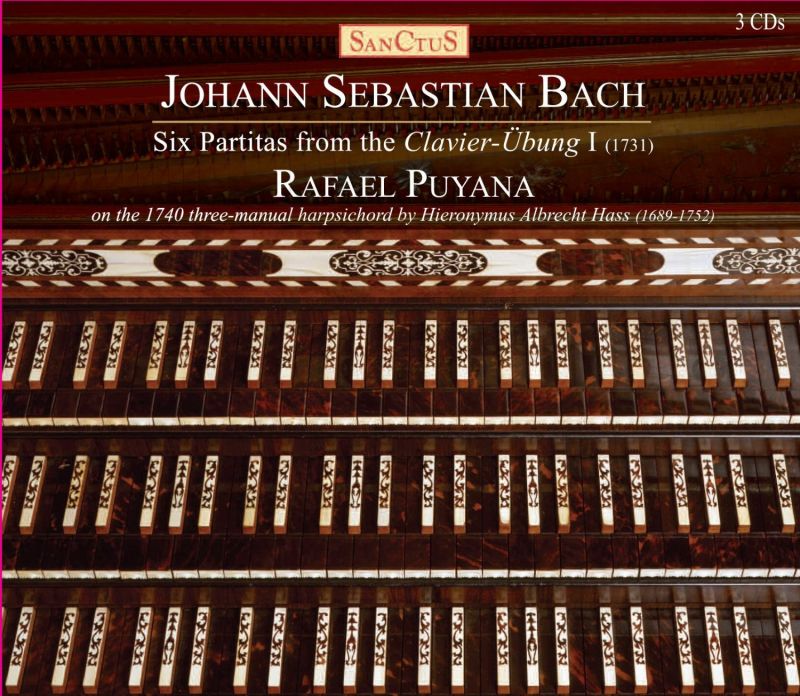JS BACH Six Partitas BWV825-30
View record and artist detailsRecord and Artist Details
Composer or Director: Johann Sebastian Bach
Genre:
Instrumental
Label: Sanctus
Magazine Review Date: AW2014
Media Format: CD or Download
Media Runtime: 156
Mastering:
DDD
Catalogue Number: SCS027/9

Tracks:
| Composition | Artist Credit |
|---|---|
| (6) Partitas |
Johann Sebastian Bach, Composer
Johann Sebastian Bach, Composer Rafael Puyana, Harpsichord |
Author: Lindsay Kemp
That case is made by the harpsichord itself, an imposing specimen built in 1740 by Hieronymus Albrecht Hass boasting no fewer than three manuals. In this it is the only surviving instrument of its kind, a mighty apotheosis of the German school of harpsichord makers whose organistic pursuit of a wide colour palette can hardly be ignored when searching for an appropriate sound world for Bach. Puyana uses all the sounds at his disposal but is far from being vulgar with them, generally favouring block contrasts of timbre over gratuitous manual-hopping, and often finding a truly impressive grandeur. A pupil of Landowska, his natural tendency is towards the legato line, with more detailed articulation used mainly to help achieve contrapuntal clarity, something he does very well, even when the 16 foot is on (just listen to the Fifth Gigue). There is mastery here; but less gripping is a stately steadiness of tempo that can make somewhat featureless landscapes of some movements. And, magnificent as it looks, the actual sound of the harpsichord is not in itself an especially beguiling one. There are also some strange edits to disturb the listener.
The story of how this instrument came into Puyana’s possession and of its restoration is a warming one and is well told in the booklet by the producer, whose labour of love this release truly is. Yet while harpsichord enthusiasts will certainly need to hear it, it is unlikely to become a first choice for the repertoire.
Discover the world's largest classical music catalogue with Presto Music.

Gramophone Digital Club
- Digital Edition
- Digital Archive
- Reviews Database
- Full website access
From £8.75 / month
Subscribe
Gramophone Full Club
- Print Edition
- Digital Edition
- Digital Archive
- Reviews Database
- Full website access
From £11.00 / month
Subscribe
If you are a library, university or other organisation that would be interested in an institutional subscription to Gramophone please click here for further information.




